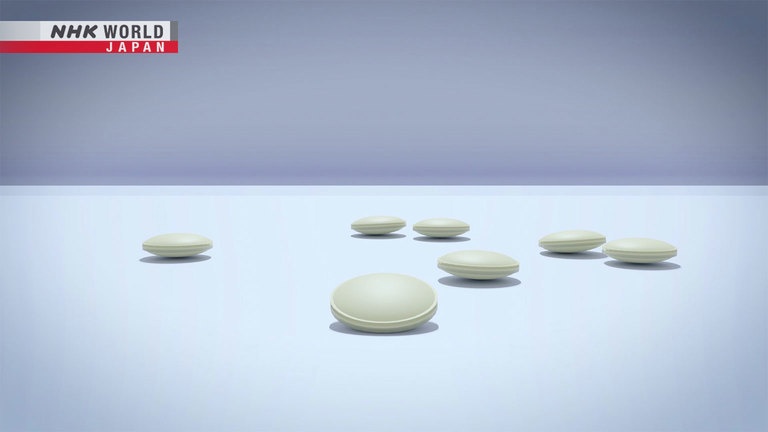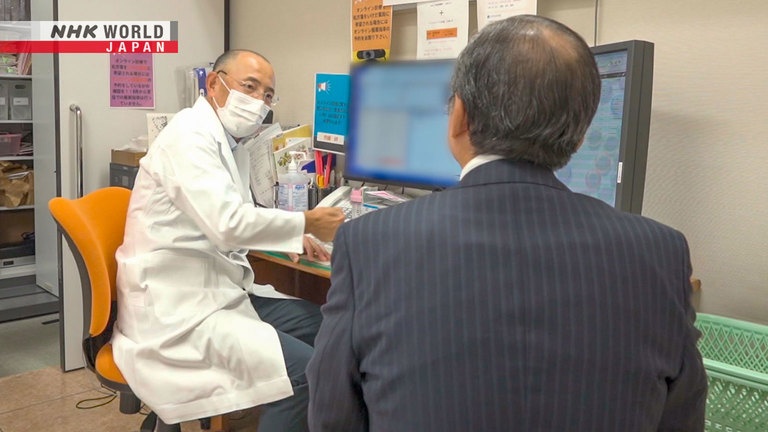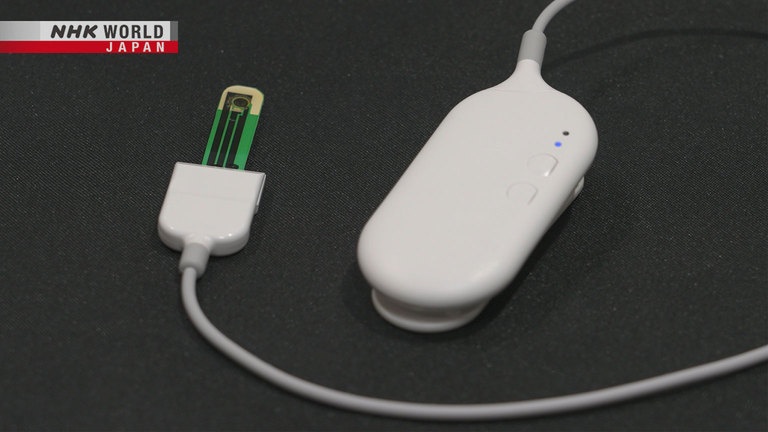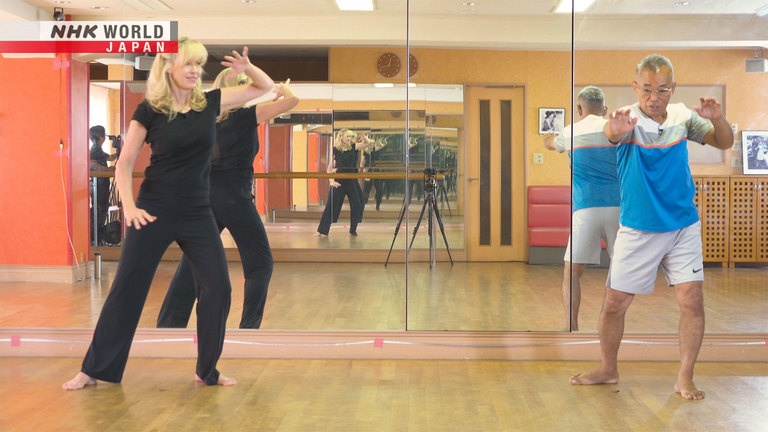Tackling Heart Failure Through the Kidneys
Heart failure, which is rising globally, has no cure. A type of medication gaining attention for the ability to slow down its progress is SGLT2 inhibitors, which treat diabetes by acting on the kidneys. When the kidneys are burdened, the heart attempts to compensate, but this medication gives the kidneys a rest, reducing the heart's workload. Additionally, a sensor is being developed to measure the appropriate exercise level for each patient. We provide the latest updates on heart failure treatment.




Transcript
Join us as we explore Medical Frontiers!
Our hearts work tirelessly beating around 100,000 times
and pumping out 8000 liters of blood throughout the body every single day.
Heart failure occurs when the pumping function of the heart weakens
and the number of heart failure patients continues to rise rapidly each year with about 64 million patients worldwide.
And once a person develops heart failure at this stage, there isn't a complete cure.
But researchers around the world are in search for new treatments.
And now there is growing interest in drugs that target the kidneys.
So let's find out how this mechanism works.
This is an MRI video of a healthy heart.
The heart contracts and expands, working like a pump to send out blood.
In contrast, this video shows a heart with a condition called heart failure.
The heart muscle has weakened, and it is unable to contract as well as a healthy heart.
As a result, it cannot pump enough blood.
Let's look at how heart failure develops.
Yamazawa Takayuki is in his 50s.
In May 2023, he experienced severe chest pain.
While lifting a heavy object at home,
I suddenly became dizzy and felt chest pain.
My left arm was throbbing, and although it still
had sensation, it felt cold and painful.
Medical tests revealed that he had suffered a myocardial infarction.
A blood vessel had become blocked, leading to the death of heart muscle tissue.
The process leading to heart failure is divided into four stages.
In stage A, people have risk factors for heart failure,
such as high blood pressure or diabetes, but no symptoms of heart disease.
Yamazawa was diagnosed with Stage B, characterized by structural heart diseases
such as myocardial infarction or valvular disease, but still no symptoms of heart failure.
In stage C, individuals have either current or previous symptoms of heart failure.
Yamazawa's doctor cautioned him to reduce smoking to prevent his heart condition from progressing to stage C.
It's good that you've cut down on smoking,
but do you think you can quit?
I have to. My family is also telling me to quit.
Your family is probably worried as well.
You could have another heart attack.
You survived the first one,
but you might not survive the next.
Hayashi Hiromu is in his 70s and has a chronic history of high blood pressure.
Despite having no previous heart-related illnesses, he was diagnosed with heart failure in 2009.
His heart's pumping ability had declined, resulting in symptoms commonly
associated with heart failure, such as palpitations and shortness of breath.
I'd experience shortness of breath
and find it difficult to walk quickly.
If I tried to walk faster,
my heart would start racing,
and my legs seemed reluctant to move.
One time, while I was walking, my vision
suddenly went dark and I lost consciousness.
I've noticed that as I've grown older,
my heart's strength has been diminishing.
Hayashi's symptoms indicate that he is in stage C.
If conditions worsen to stage D, frequent hospitalizations may be necessary, and treatment will become difficult.
Once a patient develops heart failure, symptoms tend to worsen over time.
The condition cannot be cured.
However, new drugs are making it possible to slow down the progress of symptoms.
SGLT2 inhibitors are one type of medication for heart failure.
They were originally created to target the kidneys, not the heart.
They can reduce blood sugar levels and are mainly given to people with type 2 diabetes.
But now, they're also used to treat heart failure in Japan, the United States and European Union countries.
The breakthrough came with an international clinical trial published in 2015.
The trial divided type 2 diabetes patients into two groups, giving an SGLT2 inhibitor to one group and a placebo to the other.
Over time, the inhibitor group was found to have 38 percent fewer cardiovascular deaths.
It also had a 35 percent reduction in hospitalizations.
The reason kidney drugs work on the heart remains a mystery.
A Japanese doctor who has investigated this puzzle has published many papers on the subject.
Sano Motoaki of Keio University is studying the mechanism of SGLT2 inhibitors
with the goal of expanding their use in treating heart failure patients.
Dr. Sano, thank you so much for your time today.
Thank you for having me.
Can you explain how exactly the heart affects the kidney and vice versa?
When the heart is compromised,
the kidneys work hard to compensate.
But eventually, the kidneys deteriorate, so
the heart tries to help, but ends up overworking.
In other words, when one organ declines, so does
the other. It's a mutually detrimental relationship.
In that sense, kidney function plays
a very important role in heart failure.
The heart and the kidneys are closely linked.
The kidneys play a role in conditions such as high blood pressure and diabetes,
which are risk factors for heart failure.
They regulate blood pressure by filtering the blood sent from the heart and removing excess water and salt.
A decline in kidney function can lead to high blood pressure.
The kidneys also control blood sugar levels.
Glucose is an essential energy source.
The kidneys filter it from the blood and help manage its reabsorption into the bloodstream.
However, in diabetes, there is an excess of glucose in the blood, which the kidneys try to remove through urine.
This puts a significant strain on them.
Persistently high blood sugar levels can lead to a decline in kidney function.
SGLT2 inhibitors block the reabsorption of glucose from the kidneys into the bloodstream.
SGLT2 inhibitors don't just lower blood sugar
by promoting glucose excretion in the urine.
They also reduce the kidneys'
workload in reabsorbing sugar.
This gives the kidneys a chance to rest
and preserves their function.
Ultimately, these drugs protect the kidneys
and help to prevent heart failure.
So what stage are these drugs, these inhibitors -
What stage are they prescribed?
Patients with stage C heart failure
can be prescribed SGLT2 inhibitors.
However, those in stage A or B without shortness
of breath or hospitalization are not yet eligible.
Using these drugs as a preventive measure rather
than a treatment is more beneficial in the long run.
Patients tend to be diligent about taking
medication for immediate relief,
but they're reluctant to take drugs that may
benefit them 10 to 20 years down the line.
To communicate, persuade
and provide treatment for them is our job.
Let's explore the potential side effects of SGLT2 inhibitors for heart failure patients who do not have diabetes.
In some people, such as lean,
older heart failure patients,
the drugs can lead to calorie excretion
in urine, causing unwanted weight loss.
Their heart condition may improve, but the muscle
loss can limit mobility, so caution is needed.
Is there any chance that the patients then could have hypo or low blood sugar?
When used alone, SGLT2 inhibitors
do not cause hypoglycemia.
But when they're added to other medications that
lower blood sugar through different mechanisms,
they can sometimes trigger severe hypoglycemia,
so caution is necessary.
So what do you keep in mind when you're interacting with patients on a daily basis?
Our primary goal is to prolong the lives of
people suffering from heart failure.
We want to extend the longevity of their hearts.
For many heart failure patients
with lifestyle-related diseases,
I believe existing treatments can help them
to live as long as people without such conditions.
My approach is to encourage patients to strive
for the same lifespan as that of healthy people.
Thank you.
After a heart failure diagnosis, it's crucial for individuals to undergo exercise training as part of cardiac rehabilitation.
The rehabilitation program also includes nutritional guidance, mental support and more.
Exercise has benefits such as improving blood circulation and heart muscle health,
and it slows the progress of heart failure symptoms.
Japanese statistics show that outpatients who undergo appropriate cardiac rehabilitation
have a 36 percent lower risk of mortality than those who do not receive it.
However, heart failure patients must be careful because their cardiac function is reduced.
Excessive exercise can strain their heart.
Hayashi, who was discharged from hospital just a month ago, is doing exercise under the guidance of his doctor.
You managed to do it.
Katsumata Yoshinori, gives exercise recommendations based on patients' conditions.
It's difficult to determine how much
exercise is acceptable.
To provide the right exercise training, it's necessary to determine the amount and type of exercise that's safe and effective for each patient.
Please put on this snug-fitting mask.
It may affect your breathing a little bit.
The current method of measuring exercise load involves patients wearing a snug-fitting mask to analyze their breath during exercise.
This allows monitoring of the conditions of the patients' heart, lungs, and muscles and determines a safe exercise level.
During light exercise, the muscles use oxygen to produce energy.
This is known as aerobic exercise.
As exercise intensity increases, oxygen becomes insufficient, leading to a shift into anaerobic exercise.
In this state, the muscles start producing lactate as an alternative source of energy.
The point at which the concentration of lactate rises sharply is called the anaerobic metabolic threshold, or AT.
Around the AT is the safe and effective exercise level for patients with heart failure.
Nevertheless, some patients feel anxious or uncomfortable when wearing such masks, which can discourage them from undergoing the test.
Additionally, the test requires expensive analytical equipment, limiting its availability to larger hospitals.
In Japan, only about 20 to 30 percent of medical facilities are capable of measuring exercise loads using breath analysis.
Recognizing that sweat also contains lactate, Katsumata's research group developed a sensor to measure it.
The sensor can be easily attached to a patient's forehead before exercise.
Sweat lactate levels can be monitored using a smartphone app.
This eliminates the need for costly equipment.
This point is the anaerobic
metabolic threshold, or AT.
The sensor showed the same level of accuracy in determining the AT as the breath-measurement method.
With this new device, Katsumata aims to create a more accessible environment for heart failure patients to take part in exercise training.
Using data, I can offer precise exercise guidance.
Instead of, "Exercise enough to sweat a little,"
I can say, "Walk at a speed of 4 km per hour,"
or, "Try light jogging."
Expressing targets with numbers can make
more people feel comfortable and motivated.
It may not address all concerns,
but increasing the percentage of patients
who undergo the test from 20% to 50-60%
with this sensor can lead to more patients
receiving prescribed exercise training.
However, there are still challenges to overcome.
Many heart failure patients have a lower metabolism, making them less likely to sweat.
We are grappling with issues such as how to
use the sensor on people who sweat less
and what to do about environmental factors.
We need to overcome them to reach more patients.
The sweat lactate sensor is undergoing screening for authorization as a medical device.
Katsumata and his colleagues expect approval in a year and are planning for further improvements.
With the efforts of doctors and researchers,
development of new drugs and rehabilitation are improving the quality of life and also helping to prolong the lifespan for heart failure patients.
But we have to remember, at this point in time, unfortunately, there is no cure for heart failure.
The key is to proactively take care of our hearts with a healthy, balanced diet, controlling blood sugar levels,
exercising and managing stress to keep our incredibly hardworking organ in great shape.
Sumo is a traditional Japanese sport.
Sumo wrestlers build their powerful bodies through years of dedicated training.
Our guest today is retired sumo wrestler Matsuda Tetsuhiro, who also joined us in the previous episode.
Let's learn a shoulder-blade exercise inspired by the training routines of sumo wrestlers.
So what's the first exercise you're going to be doing today?
Let's do an exercise called "teppo,"
which helps to strengthen the shoulder blades.
"Teppo" involves pushing the palms alternately against a pillar.
It teaches the basics of pushing out the opponent.
Matsuda has modified the movement so that it can be done without pillars.
Begin by standing with your feet shoulder-width apart, toes slightly outward and knees relaxed.
Bend your elbows to a 90-degree angle.
Next, extend your right arm forward to the left, turning your face, hips and knees in the same direction.
Bring the extended arm back while raising your elbow.
Form a semi-circle with your hand as it passes in front of your forehead and returns to the starting position.
This may seem like an exercise for the arms,
but it's meant to engage the shoulder blades and
coordinate the entire body, from the arms to
the shoulder blades, hips, knees and feet.
Extend your arm diagonally to the left,
moving all of your bones with it.
Forget about your muscles,
and focus only on moving your bones.
The first key point of teppo is to raise your elbow, opening up your armpit.
When returning your extended arm, raise your elbow again so your armpit is open.
This balances the force on the shoulder blade muscles, ensuring smooth and effortless movement.
Raising the elbow creates a smooth connection
between the shoulder blade and the arm,
which extends down to the hips and feet.
The second key point of teppo is the coordinated movement of the upper and lower body, called "namba aruki."
Until around the mid-19th century, namba aruki was the usual way of walking in Japan.
It involves moving one side's arm and leg forward together, without twisting the body.
Sumo wrestlers also move this way in the ring.
The movement aligns with the natural human skeletal structure.
In the past, Japanese people would
move each side of their body in turn.
That would minimize stress on the body
and boost endurance and power.
Now, let's try teppo with these two points in mind.
It's more difficult than it looks.
Extend your right arm diagonally in front of you,
engaging your hip and knee.
Raise your elbow as you bring your arm back.
Extend your arm. Raise your elbow,
and return your arm using your whole body.
Extend, then return.
Much easier for me do it this way.
Next, the left arm.
It's a movement that we don't do normally.
Now, let's try teppo with both hands.
The key is to maintain continuous movement
and to engage your entire body simultaneously.
Begin with your right hand. Extend the right,
then the left, while engaging your hips and legs.
As you extend your right hand, pull back
your left hand. Good job.
Try to speed it up.
You feel like everything's really loosened up a lot here.
You feel like everything's more flexible.
You could just rotate your shoulders, but
this is better for loosening the shoulder blades.
I think a lot of us these days - we're stuck in our computers for, endless hours of the day.
Next, let's try "dohyo-iri," the ritual sumo wrestlers perform when they enter the ring.
This exercise is also beneficial for the shoulder blades.
Begin with both arms lowered.
Exhale completely through your mouth.
Inhale and raise your arms high, focusing on your shoulder blades.
Exhale while lowering your arms and clap your hands forcefully.
Rub your hands together as you exhale completely, then turn your palms upward.
Take a deep breath and spread your arms wide.
Finally, with your palms facing down, lower your arms slowly while exhaling.
Step 1, exhale completely.
Step 2, inhale.
Step 3, clap your hands. Move your arms
while focusing on your shoulder blades.
Step 4, palms up, and 5, open your chest wide as
if the movement starts from your shoulder blades.
Raise your elbows higher.
Focus on your shoulder blades.
Turn your palms downward.
Exhale as you lower your arms slowly.
It's quite interesting because, this, in yoga, there's something called salute to the Sun,
which is something, which is a little bit similar to this.
It feels a little bit similar, but it's so beautiful to watch.
Please do this every day.
Thank you.